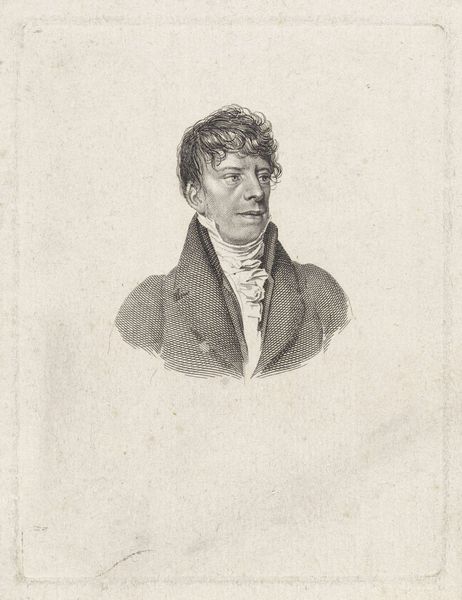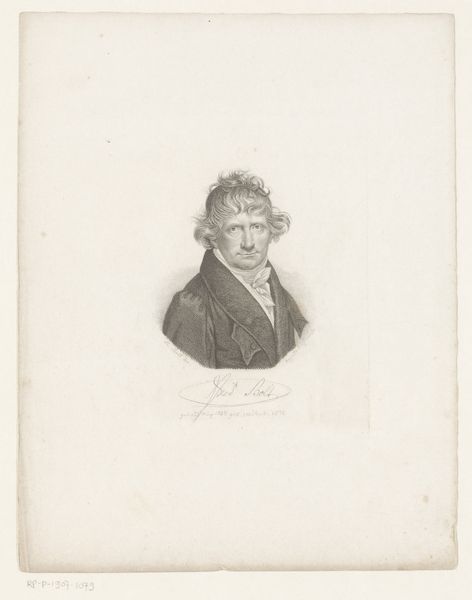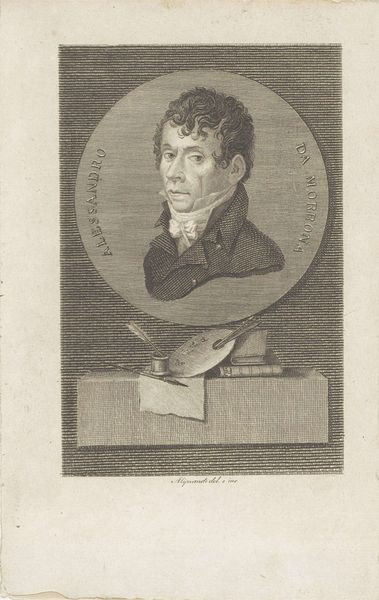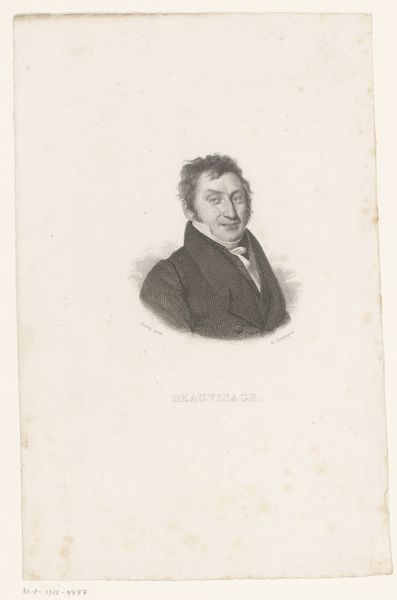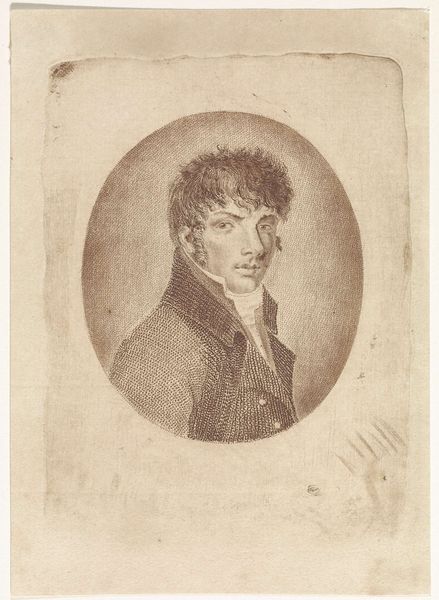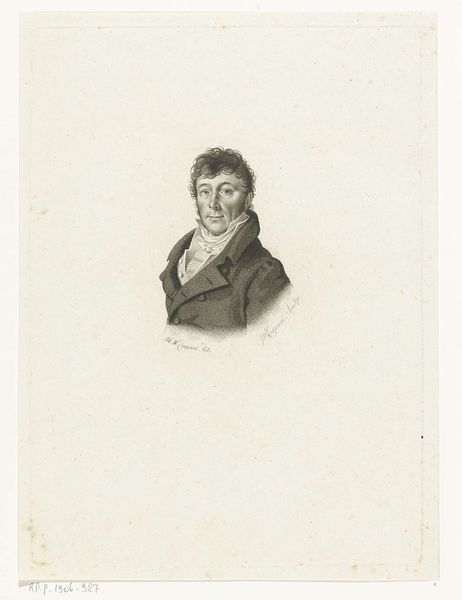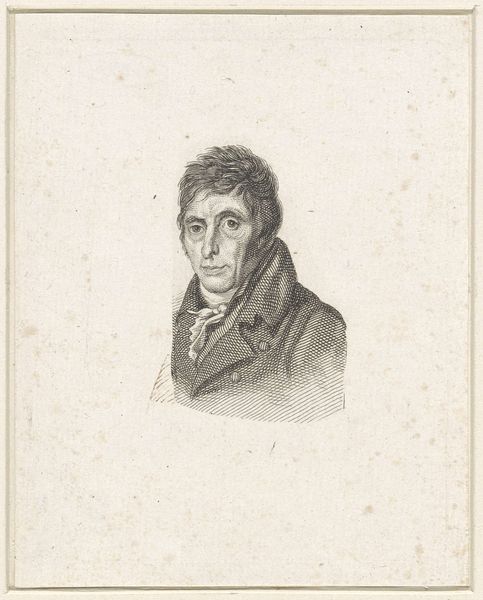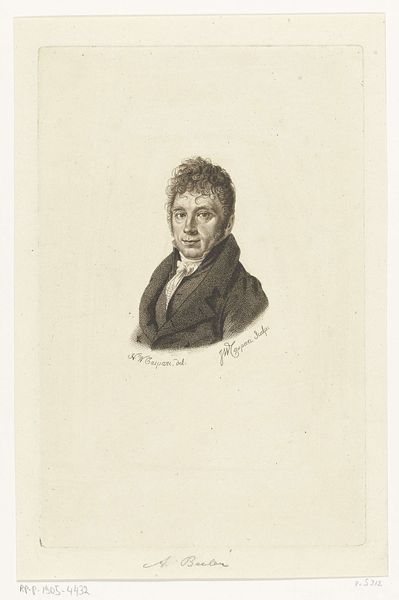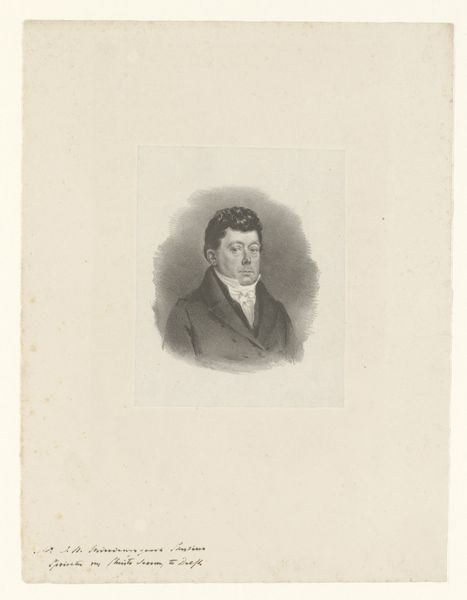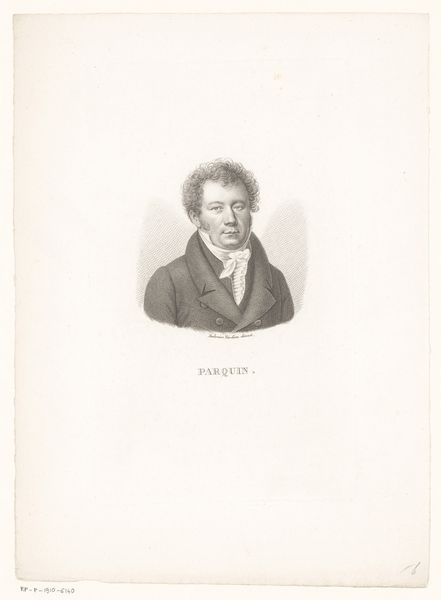
print, engraving
#
portrait
# print
#
old engraving style
#
pencil drawing
#
engraving
#
realism
Dimensions: height 132 mm, width 105 mm
Copyright: Rijks Museum: Open Domain
Editor: Here we have Philippus Velijn’s "Portret van Adrianus Cornelis Schenk", an engraving from 1832. It's quite a striking image! I am really drawn to the detailed hatching that gives so much texture to his coat. What do you see in this piece? Curator: The brilliance of this work lies precisely in the meticulous execution of the engraving. Observe the use of line: varied pressure and density creates form and volume from what is essentially a flat plane. Consider how the engraver built depth, moving from light to shadow. Editor: It is amazing how they captured the light. How does the composition contribute to the work? Curator: The stark contrast between the subject and the plain background forces one's gaze towards the face. But the artist uses a three-quarter view, a strategic choice that injects dynamism, deviating from a static, symmetrical portrayal. What semiotic elements are perceivable, and how do these forms contribute to our interpretation? Editor: It feels very direct and honest. So much expression is conveyed through the textures created by those simple engraved lines. What is important for me, is to reflect on all the things one can accomplish with just one material! Curator: Indeed! By analyzing its intrinsic visual vocabulary, we can come to appreciate its technical complexity and aesthetic impact on its own terms, divorced from concerns about social relevance. This helps reveal essential elements of an artwork.
Comments
No comments
Be the first to comment and join the conversation on the ultimate creative platform.
